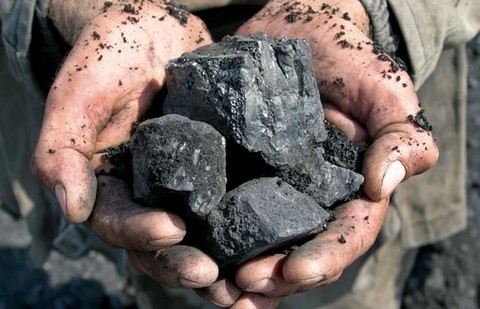 What is a coal in geology ?
What is a coal in geology ?
Coal : definition
Coals are fossil fuel sedimentary rocks of organic origin, black in color. The coals come from plant debris stored in the sediments and slowly transformed by pressure and temperature.
They are divided into several categories with increasing carbon content and calorific value :
Peat (55% carbon) : it is a poor fuel in current deposits mainly made up of mosses that have undergone a slight transformation (some authors even consider that it is not yet coal).
Lignite (70 to 75% carbon) : it consists of little transformed organic material, still shows identifiable plant debris. Its deposits are generally of Tertiary or Secondary age.
Properly speaking, black, mat or shiny coal is subdivided into 2 categories : coal (85% carbon and between 8% and 33% volatile matter) and anthracite (92% to 95% carbon with less 8% volatile matter) to highly transformed organic matter.
Graphite (100% carbon) : this is the ultimate term for the transformation of organic matter, it appears in metamorphic soils. It is not used as a fuel, having more valuable industrial applications.
Let us remember that if the Carboniferous (-300 million years old) is a geological period to which many coal deposits belong, not all the coals are of Carboniferous age.
They are divided into several categories with increasing carbon content and calorific value :
Peat (55% carbon) : it is a poor fuel in current deposits mainly made up of mosses that have undergone a slight transformation (some authors even consider that it is not yet coal).
Lignite (70 to 75% carbon) : it consists of little transformed organic material, still shows identifiable plant debris. Its deposits are generally of Tertiary or Secondary age.
Properly speaking, black, mat or shiny coal is subdivided into 2 categories : coal (85% carbon and between 8% and 33% volatile matter) and anthracite (92% to 95% carbon with less 8% volatile matter) to highly transformed organic matter.
Graphite (100% carbon) : this is the ultimate term for the transformation of organic matter, it appears in metamorphic soils. It is not used as a fuel, having more valuable industrial applications.
Let us remember that if the Carboniferous (-300 million years old) is a geological period to which many coal deposits belong, not all the coals are of Carboniferous age.
Burning coal mine
This term refers to areas of coal mines, or coal mining heaps, which have undergone natural combustion. This combustion results from the triggering of exothermic chemical reactions, a consequence of the action of surfactants (air, water) on the confined reducing medium environment of the coal veins. The high temperatures reached in these areas favor sometimes spectacular new mineral formation (realgar, sulphur, native selenium, etc...).

